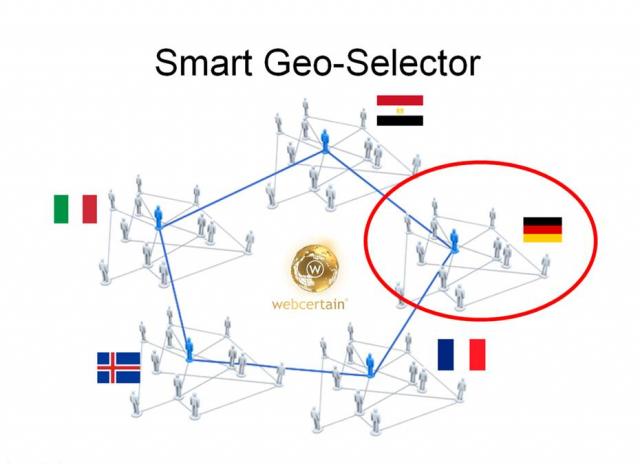 John Mueller of Google Switzerland announced at the International Search Summit last week the launch of a new hreflang attribute known as “x-default” — along with a number of tips of global website managers which we will cover today.
John Mueller of Google Switzerland announced at the International Search Summit last week the launch of a new hreflang attribute known as “x-default” — along with a number of tips of global website managers which we will cover today.
For those of you who have not come across rel-alternate-hreflang annotation before, we have written about this many times in this blog. Put simply, Hreflang is an optional signal you can give to Google at page level (in the head, header or sitemap) that a page for one region is equivalent to a page in another region, in effect describing your international network to help search engines better understand it. The key effect is ensure that the correct local URL is displayed to searchers in a given region.
As if setting existing “hreflang” attributes weren’t enough to worry about, now “x-default” gets added to the geo-targeting mix. Soon, those of us working on the markup for international sites will be leaving our domestically-focused colleagues feeling rather confused!
To explain its use, “x-default” is the attribute you specify in the hreflang string, so ”” would instead become ”” noting that this might apparently conflict with region or language parameters or domains in the URL. You would use this on pages that you would expect to be delivered to users in multiple regions.
Just last week, I saw a fresh blog post on international SEO published which said that you should set the meta language tag, yet didn’t even mention “hreflang.” As you’ve probably read many times by now, you do NOT need to set the meta language tag — you should, however, be aware of the uses of the hreflang attribute, as it is a very a helpful solution for multinational and/or multilingual sites.
“X-Default” Is A Tool For Country Pickers Or Geo-Selectors
Let’s get back to “x-default.” Google has identified that there is a gap in its hreflang solution related to what they refer to as “country pickers.”
What John means by “country pickers” are those URLs where a dedicated tool exists for a web user to select a region, country or language. In fact, we typically don’t define these website tools as “country pickers” because it’s very rare for global sites to geo-target merely by country. One might go so far as to say that if a global site only includes countries in their list of regions, they must be doing something wrong.
In the graphic above, each flag represents a local website — the blue men, webpages. Ideally, they should all be linked together as a network to maximise the SEO benefits of being “global.”
It makes much more sense to think of “regions” or “geos” as the country and language combined. So, for instance, “French-speaking Belgium” would be a region or geo just as “French-speaking France” would be. And whilst we’re here, best practice in our view is that you should do this just the same if your targeting is language based.
Best Practice Is Not To Use Neutral Languages
In other words, if you’re targeting “French” as a language, you should really say which flavor of French you’re offering. There is much less risk in using this more specific kind of targeting than in trying to use a “neutral” language catch-all which, in actuality, often presents users with a something vaguely foreign. (Can anyone tell me what “international English” is?)
The problem with hreflang attributes in their pre-“x-direct” form is that they have to specify, at the very least, one global language — and, more typically, a language plus a country. What do you do if you have a map containing all of your different regional sites that you wish to make available in every market, for users who are trying to figure out which version they might want to use?
If you added a hreflang attribute, you would likely restrict a specific version of the site to certain users — those speaking French, for example. Or, you would show them a localised mylocaldomain.fr version of your site when you actually needed to show them a dot com or some other generic location where you’ve placed a map of the world.
When To Use “X-Default”
So since “x-default” is useful as an alternative to the “de_de” style coding of hreflang, it can help in the following cases:
- Where generic country and language selectors are used commonly across the site
- For redirecting homepages
- For homepages where the language adapts either automatically or through user selection
- To designate a preferred generic version
I have a funny feeling that there will be additional purposes found for the new “x-default,” although personally I have not come up with any just yet!
John Mueller explained that one of the reasons behind the launch of this new attribute is that many webmasters who have adopted hreflang attributes have been choosing to “noindex” the geo-selector pages in order to make them inaccessible specific regional targets. This means that whilst hreflang is helping to identify how the webmaster’s network is structured — with hreflang acting as a “link” (in the non-href sense) between two pages with equivalent content — the benefit of hreflang to Google is much reduced if the top level network is broken due to being marked “noindex.”
When To Use 302-Redirects Instead Of 301s!
John’s presentation also included an explanation of when it would be preferable to use a 302-redirect to a 301 — specifically, when dealing with caching issues and network proxies. In other words, a 302-redirect makes sense when the URL represents a temporary copy of content that actually sites substantively somewhere else. As always, the redirect targets must remain crawlable and indexable.
Webmasters who adopt adaptive language approaches were asked to note that especially if they automate that, there should be a dedicated URL for that content.
On a final note, John pointed out that Geo-IP databases used to auto-select a language or country are often incorrect and in any case it’s a much better solution to let the users choose. This is particularly true from a crawl perspective as John said, “Googlebot usually crawls from the US, so don’t cloak!”
I’ve also noticed that even Google has moved nearer to this approach for its own geo-targeting and it works much better. So whilst I was reading some webmaster tools guidance in German last week, a banner alongside was suggesting I might prefer to read it in English. (Actually, I wanted to see how it had been expressed in German as I was at a German-speaking conference).








